Rare map of Africa, published by Jean Temporal.
Rare early map of Africa, with south at the top, which appeared in Historiale description de l'Afrique, published by Jean Temporal. Geographically, this map is a close copy of the map Gastaldi/Ramusio map, which first appeared in 1554. In this edition of the map, the names have been translated into French, and the ships and sea monsters are engraved in a new, slightly larger style.
This French edition is rare on the market--the complete book sold at Sothebys in London in 2003, where it sold for £21,600.
Leo Africanus
Joannes Leo Africanus (1494 - 1554) was born al-Hasan ibn Muhammad al-Wazzan al-Fasi.
Leo Africanus was born as al-Hasan, son of Muhammad in Granada, Islamic Spain. He moved duringe early childhood to Fez, where he studied at the University of al-Qarawiyyin. As a young man he accompanied an uncle on a diplomatic mission, reaching as far as the city of Timbuktu (c. 1510). In 1517, when returning from a diplomatic mission to Constantinople on behalf of the Sultan of Fez Muhammad II, he found himself in the port of Rosetta during the Ottoman conquest of Egypt. He continued with his journey through Cairo and Aswan and across the Red Sea to Arabia, where he probably performed a pilgrimage to Mecca.
On his way back to Tunis in 1518, he was captured by Spanish corsairs and taken to Rome, then imprisoned in Rhodes, the headquarters of the Knights Hospitaller. When his captors realized his intelligence and importance, he was moved to Castel Sant'Angelo in Rome and was later presented to Pope Leo X. He was soon freed and given pension to persuade him to stay.
Al-Hasan was baptized in the Basilica of Saint Peter's in 1520. He took the Latin name Johannes Leo de Medicis (Giovanni Leone in Italian). In Arabic, he preferred to translate this name as Yuhanna al-Asad al-Gharnati (literally means John the Lion of Granada). It is likely that Leo Africanus was welcomed to the papal court as the Pope feared that Turkish forces might invade Sicily and southern Italy, and a willing collaborator could provide useful information on North Africa. Pope Leo X (center) was Leo's initial benefactor in Rome. His cousin, Giulio de' Medici (left) later became Pope Clement VII and continued the papal patronage of Leo.
Leo Africanus left Rome and spent the next three or four years traveling in Italy. While staying in Bologna, he wrote an Arabic-Hebrew-Latin medical vocabulary, of which only the Arabic part has survived, and a grammar of Arabic of which only an eight-page fragment has survived. He returned to Rome in 1526 under the protection of the new Pope Clement VII, a cousin of Leo X who replaced Adrian. According to Leo, he completed his manuscript on African geography in the same year. The work was published in Italian with the title Della descrittione dell'Africa et delle cose notabili che iui sono, per Giovan Lioni Africano in 1550 by the Venetian publisher Giovanni Battista Ramusio. The book proved to be extremely popular and was reprinted five times. It was also translated into other languages. French and Latin editions were published in 1556 while an English version was published in 1600 with the title A Geographical Historie of Africa.
Giovanni Battista Ramusio (1485-1557) was an Italian geographer who worked within the Venetian Empire. His father had been a magistrate and he himself served as a civil servant to Venice. He served throughout Europe, allowing him to build up a network of informants and a collection of travel materials. He compiled this information into his enduring masterpiece, Navigationi et Viaggi, in 1550 (first volume) and 1556 (third volume). The second volume appeared after his death in 1559, as the original manuscript had been destroyed by a fire.









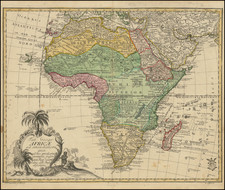
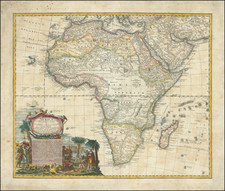
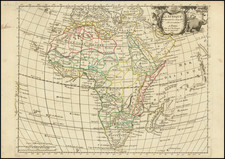
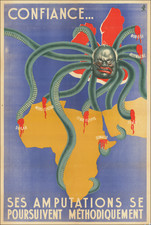
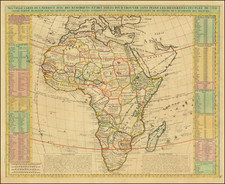
![Africa / Lybia / Morland / mit allen kunigsreichen so zu unsern zeiten darin gefunden werden [Afrika/Libyen/Morenland, with all the kingdoms found therein in our time]](https://storage.googleapis.com/raremaps/img/small/95771.jpg)